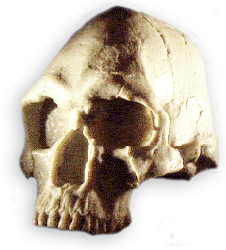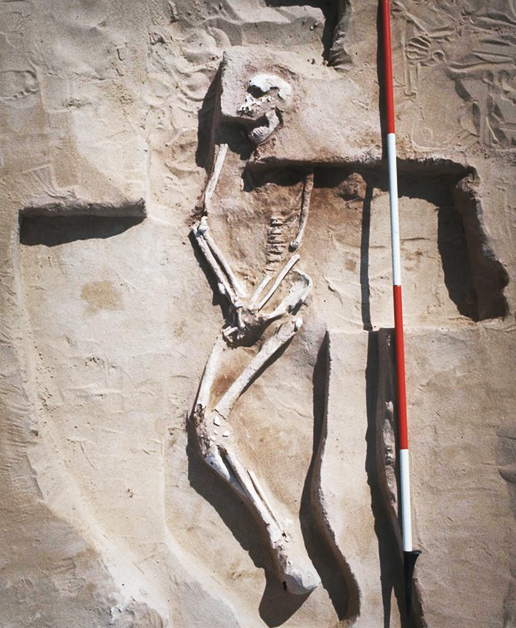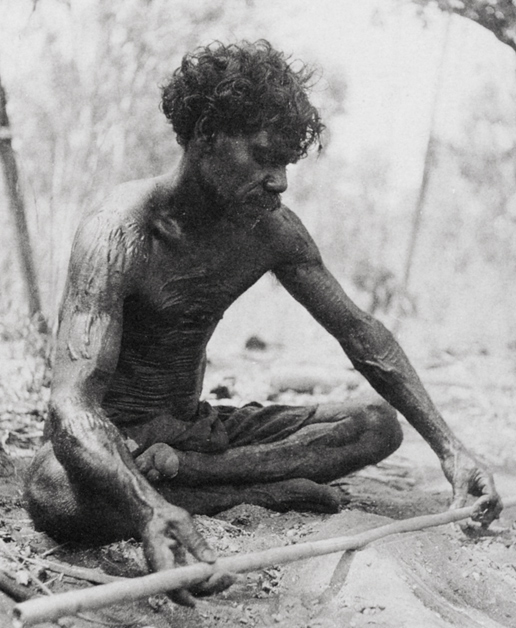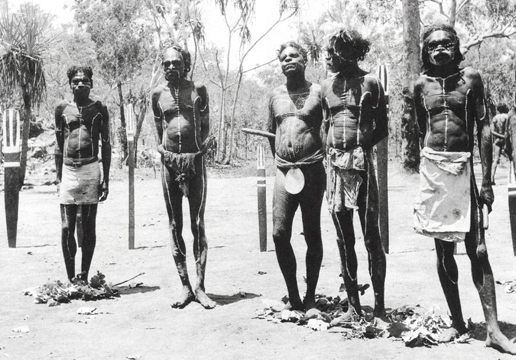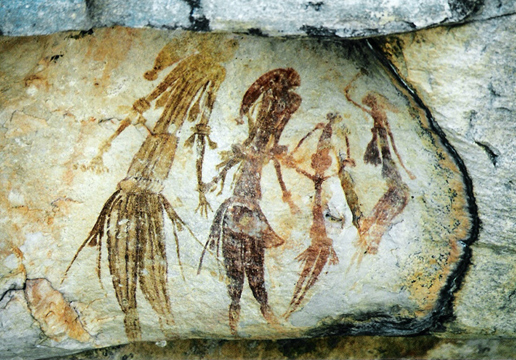 |
 |
RESEARCH INTO THE FIRST INHABITANTS OF AUSTRALIA |
Reconstruction of the
Mungo Man Skull
In 2016 Griffith University, Queensland, researchers have found evidence that demonstrates Aboriginal people were the first to inhabit Australia, as reported in the journal Proceedings of the National Academy of Sciences.
The work refutes an earlier landmark study that claimed to recover DNA sequences from the oldest known Australian, Mungo Man. This earlier study was interpreted as evidence that Aboriginal people were not the first Australians, and that Mungo Man represented an extinct lineage of modern humans that occupied the continent before Aboriginal Australians.
Scientists from Griffith University's Research Centre for Human Evolution (RCHE), recently used new DNA sequencing methods to re-analyse the remains of Mungo Man from the World Heritage listed landscape of the Willandra Lakes region, in far western New South Wales. Professor Lambert, from RCHE, said it was clear that incorrect conclusions had been drawn in relation to Mungo Man in the original study.
Lambert stated that the sample from Mungo Man which they retested contained sequences from five different European people suggesting that these all represent contamination. At the same time they re-analysed more than 20 of the other ancient people from Willandra. They were successful in recovering the genomic sequence of one of the early inhabitants of Lake Mungo, a man buried very close to the location where Mungo Man was originally interred.
By going back and reanalysing the samples with more advanced technology, they found compelling support for the argument that Aboriginal Australians were the first inhabitants of Australia. Moreover, the results proved that the more advanced genomic technology was capable of unlocking further secrets from Australia's human past; meaningful genetic information can be recovered from ancient Aboriginal Australian remains. This represents the first time researchers have recovered an ancient mitochondrial genome sequence from an Aboriginal person who lived before the arrival of the Europeans.
The research was planned and conducted with the support of the Barkindjii, Ngiyampaa and Muthi Muthi indigenous people.
Compelling support for Aboriginal
Australians being the first inhabitants
Gwion Gwion rock art from the Kimberley
region of north west Australia
If genomic technology can decode an ancient mitochondrial genome sequence from an Aboriginal person who lived before the arrival of the Europeans, this will certainly shed light on the
prehistoric art of Australia such as the Gwion Gwion paintings of the Kimberley. As dating techniques become more and more accurate, the age of the Gwion Gwion rock art will come into focus, perhaps confirming that it is the world’s oldest figurative art.
Like us on Facebook & Follow us on Twitter to receive news & updates:
→
The Australian Rock Art Archive→
Bradshaw Foundation
